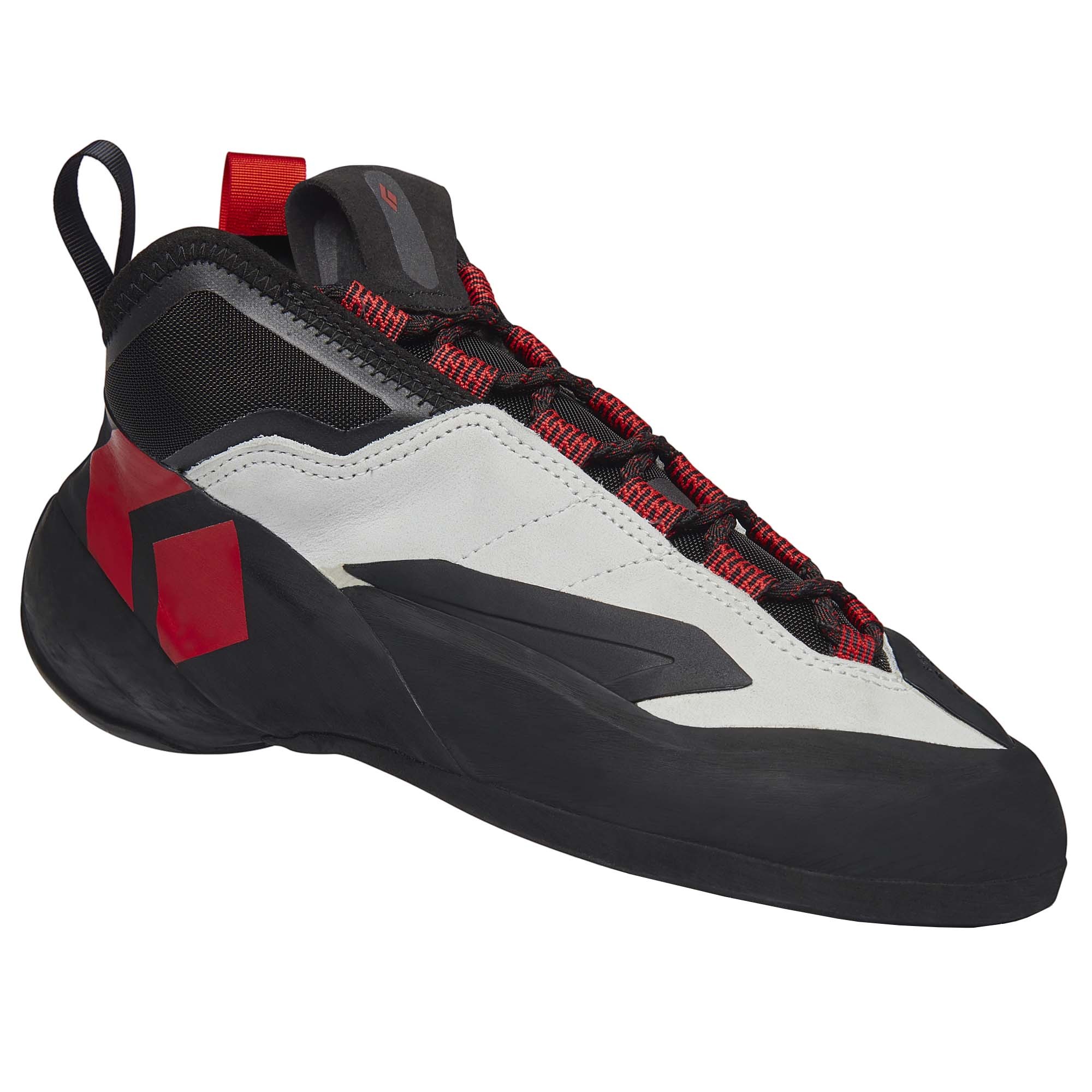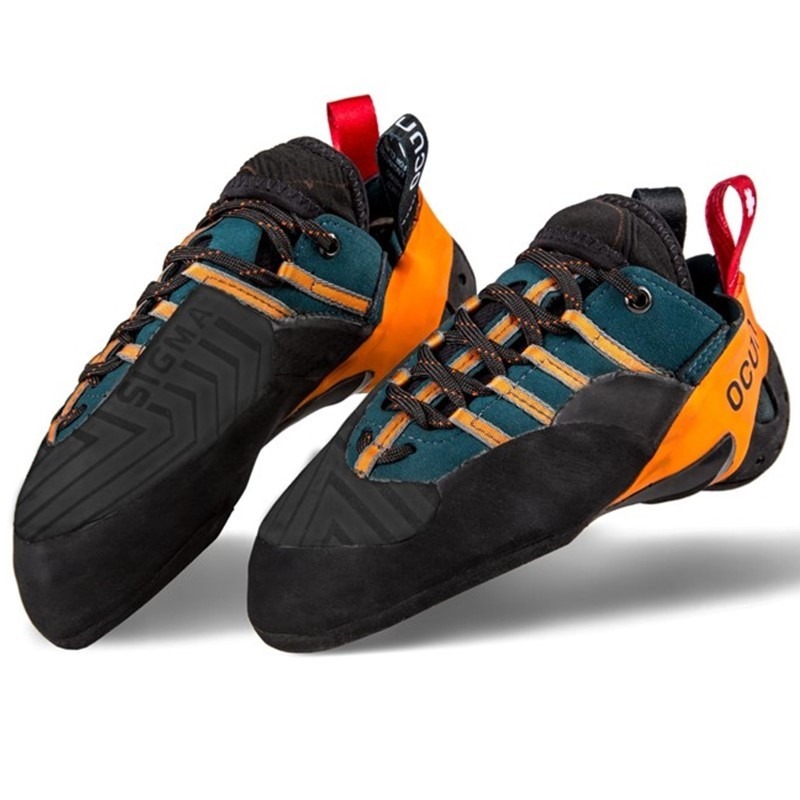The Importance of Proper Fit in Rock Climbing Shoes
When you climb, your rock climbing shoes are your foundation. They must hug your feet snugly but not pinch. A proper fit in rock climbing shoes increases your grip and improves your climbing technique. Your toes should just touch the shoe’s end without curling. This allows better precision on small holds. A tight fit is crucial, but never at the cost of circulation.
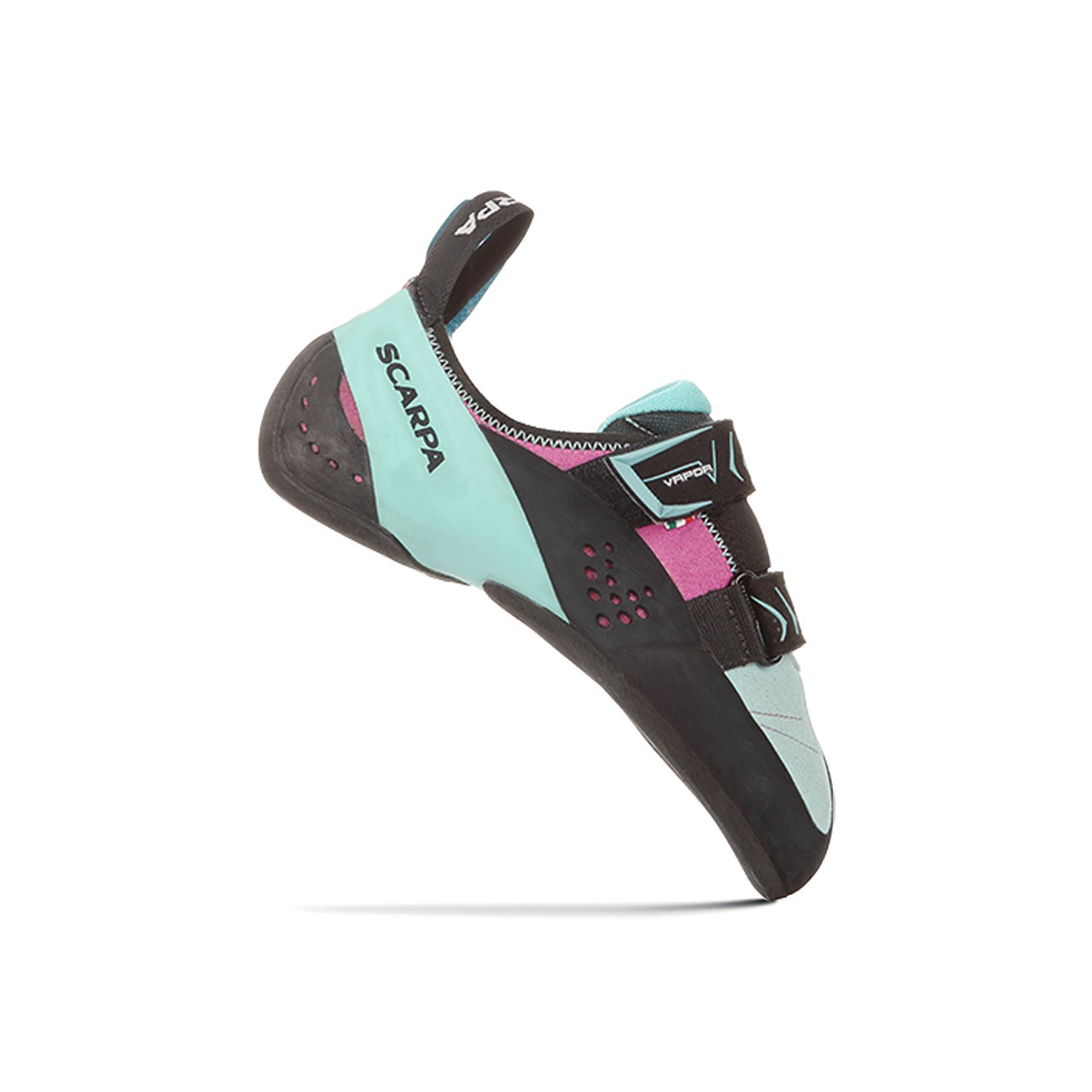
Types of Rock Climbing Shoes and Their Uses
Climbers need different shoes for different climbs. Rock climbing shoes come in various styles. Each serves a unique purpose on the rock face.
Neutral Shoes for All-Day Comfort
Neutral shoes stand out for comfort. They allow your toes to lay flat inside them. Their relaxed fit is ideal for long climbs or beginners. These shoes usually have a thicker sole. This provides more support and durability. Climbers can wear them for hours without too much strain.
Aggressive Shoes for Technical Climbs
Aggressive shoes have a downturned shape. This design gives a stronger grip on steep surfaces. They are best for challenging, overhanging routes. The close fit allows for precise foot placement. Keep in mind, they may not be as comfortable for long periods. Pro climbers choose these for short, high-intensity climbs.
Key Features to Look for in Climbing Shoes
When you’re narrowing down your choices for rock climbing shoes, paying attention to some key features can make or break your climbing experience. These features not only contribute to the performance and comfort of the shoe but also to its durability and fit. Here’s what you should keep an eye on:
Closure Systems: Lace-Up vs Velcro vs Slip-On
Rock climbing shoes come with different closure systems. Each system offers unique benefits and may affect how your shoes fit.
- Lace-Up: Lace-up shoes provide a customizable fit. You can tighten or loosen them for the best precision. They work well for long climbs where you may need to adjust the fit.
- Velcro: Velcro closures offer convenience and quickness. They are easier to put on and take off, ideal for bouldering or gym sessions where time is a factor.
- Slip-On: Also known as slippers, these shoes give you a snug fit and the highest sensitivity. They are simple, with no straps or laces to worry about.
Think about your climbing style and the kind of routes you’ll tackle. This will help you decide which closure system suits your needs best.
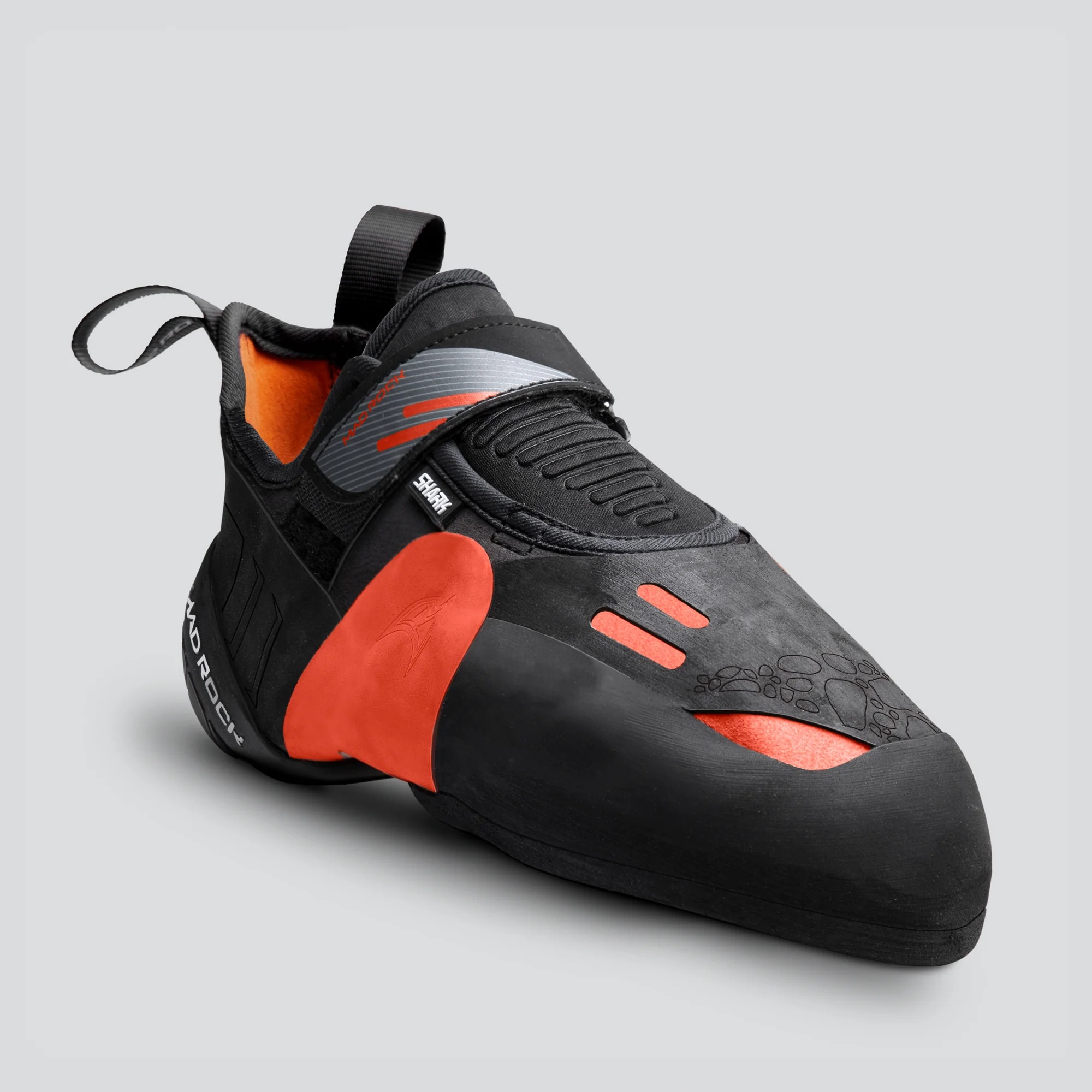
Material and Construction: Leather vs Synthetic
The material of your rock climbing shoes affects fit, stretch, and breathability.
- Leather: Leather shoes can stretch and mold to your feet over time. They offer excellent comfort and a natural feel. Remember, they may stretch up to a full size.
- Synthetic: These shoes won’t stretch much, maintaining their original shape. They are consistent in fit and often vegan-friendly.
Your choice might depend on how much you value natural materials versus lasting fit.
Rubber Type and Thickness
Lastly, the rubber on the sole of rock climbing shoes plays a vital role. It impacts grip, sensitivity, and durability.
- Type: Soft rubber provides more grip and sensitivity, but wears out faster. Hard rubber lasts longer and is more resistant to abrasion.
- Thickness: Thick soles offer support and durability, ideal for beginners or long climbs. Thin soles give better feel for the rock, favored by advanced climbers for technical routes.
Match the rubber to your climbing demands. Think about the types of surfaces you’ll be climbing and choose accordingly.
How to Size Rock Climbing Shoes for Optimal Performance
Selecting the right size for your rock climbing shoes is crucial for your performance on the rock. Here are a few steps to ensure you get the sizing just right for optimal performance and comfort:
- Measure Your Foot: Start with an accurate measurement of your foot length. Use a specialty climbing shoe sizer if possible, as regular shoe sizes may not translate directly to climbing shoes.
- Consider Your Climbing Style: Think about your climbing approach. For aggressive climbing, you may want a tighter fit. For all-day climbs, a more relaxed size could be better.
- Leave No Dead Space: Ensure there is no extra space around the heel or toes. This can affect your precision and control.
- Try Them On: Always try on rock climbing shoes before purchasing. Different brands and models fit uniquely.
The Role of Shoe Stretch and How to Account for It
When choosing rock climbing shoes, considering the potential for stretch is important. Shoe stretch refers to how much a climbing shoe can loosen after repeated use. This factor plays a significant role in achieving a long-lasting, proper fit.
- Leather Shoes Stretch More: Leather rock climbing shoes tend to stretch more over time. When new, they should fit snugly. They will mold to the shape of your foot as you wear them.
- Synthetic Shoes Retain Shape: Synthetic materials stretch less. They maintain their initial tightness better. Keep this in mind, especially if you prefer consistency in shoe fit.
- Adjust Fit Accordingly: If you opt for leather, consider buying a tighter size. This accounts for the stretch over time. With synthetic shoes, you can choose a size closer to your actual foot size.
- Monitor Shoe Condition: Pay attention to how your shoes feel after a few climbs. They should not become too loose. A shoe that slips on your foot can undermine your climbing technique.
- Break Them In Gently: Give new shoes time to break in before tackling difficult climbs. This helps them stretch and conform to your feet evenly. Do not rush the process.
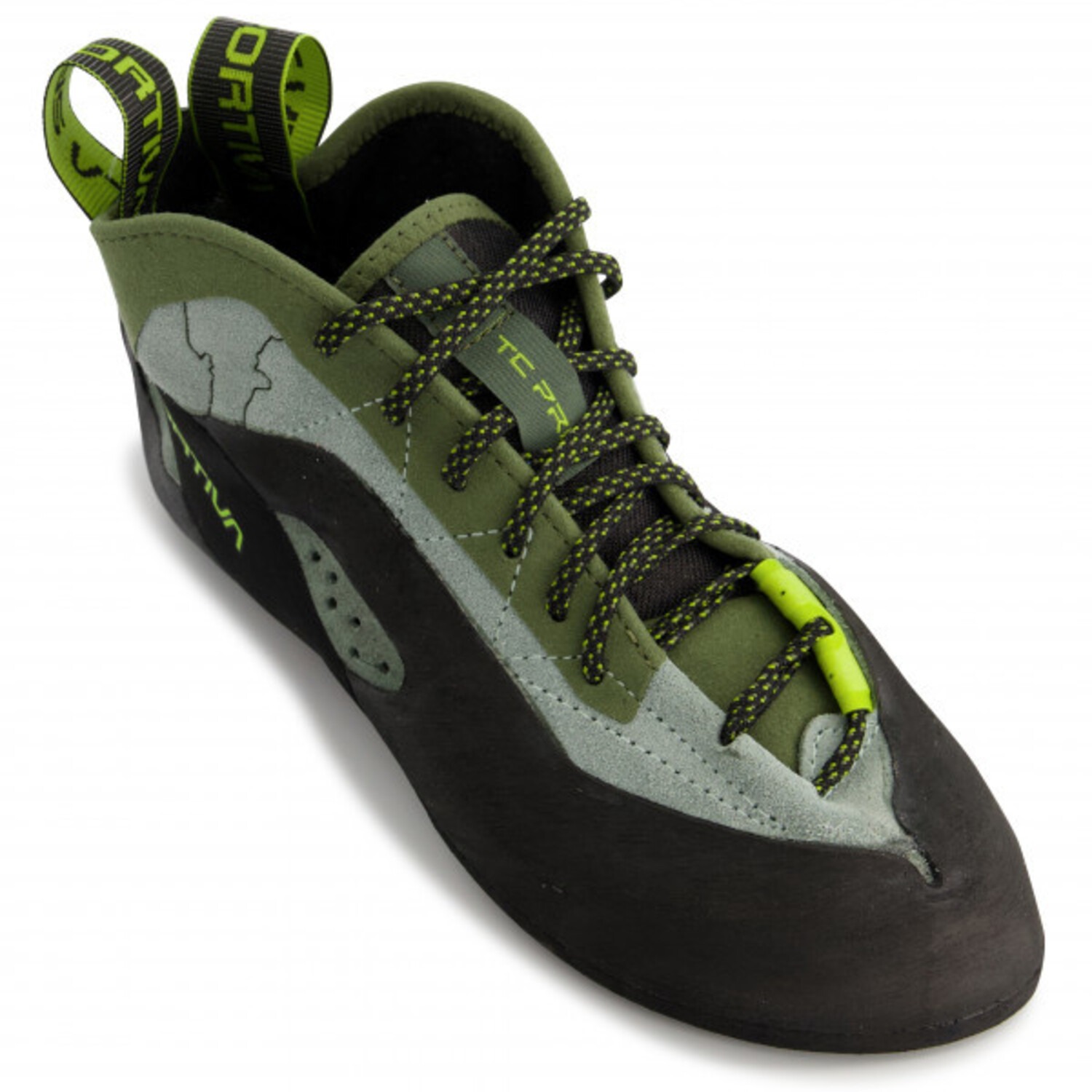
Caring for Your Climbing Shoes to Maximize Lifespan
Caring for rock climbing shoes is key to their longevity. Proper maintenance ensures that they retain their performance features, fitting comfortably and effectively anchoring you to the rock for many climbs to come. Here are simple yet crucial tips for taking care of your rock climbing shoes:
- Clean Regularly: Dirt and grime can degrade the rubber and materials. Use a soft brush to clean off any debris from the soles and upper parts of the shoes after each climbing session.
- Dry Properly: Never force dry your shoes with heat as this can damage the materials. Instead, let them air dry naturally away from direct sunlight. If they’re particularly wet, stuff them with newspaper to absorb moisture.
- Avoid Harsh Chemicals: Steer clear of harsh cleaners. If necessary, use a mild detergent and water mixture for spot cleaning. Always rinse thoroughly and air dry.
- Store Correctly: Keep your shoes in a cool, dry place when not in use. Do not leave them in a closed car or in direct sunlight, as high temperatures can warp the rubber and fabric.
By following these care tips, you help extend the life of your rock climbing shoes. This not only saves you money but also maintains the integrity of your gear. Happy climbing!
Top Considerations When Buying Your First Pair of Climbing Shoes
When diving into rock climbing, your first pair of shoes is vital. To make a wise choice, consider several factors. Here’s what to focus on:
- Fit Over Fashion: Prioritize a good fit above style. Look for shoes that support your climbing goals and feel comfortable.
- Budget Wisely: Set a budget that allows for quality without breaking the bank. Remember, investing in decent shoes can improve your climbing experience.
- Consult the Community: Ask other climbers or staff at climbing shops for advice. They can share insights on the best shoes for beginners.
- Try Different Brands: Each brand’s fit can vary. Try on several to find the best match for your feet.
- Think Long-Term: Consider shoes that can grow with your abilities. You might start with neutral shoes and later switch to a more aggressive style as you progress.
- Comfort is Key: You’ll spend substantial time in these shoes. Ensure they stay comfortable even as your feet expand during climbs.
By keeping these considerations in mind when purchasing your first pair of rock climbing shoes, you set the stage for a positive and productive climbing journey.
